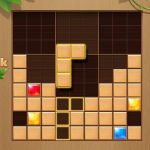Introduction
Badminton Racket, Badminton, a sport that combines agility, precision, and strategic play, is increasingly popular among young athletes. For junior players, selecting the right badminton racket is crucial for both enjoyment and development in the game. A well-chosen racket can enhance performance, prevent injuries, and foster a love for the sport. This blog post delves into the important aspects of choosing the perfect badminton racket for juniors, exploring factors such as racket weight, grip size, balance, and material, while also considering the growth and skill development of young players.
Badminton Racket: Understanding Junior Racket Requirements

When it comes to badminton rackets for juniors, the primary consideration should be the age and skill level of the player. Juniors typically have different physical attributes compared to adults, such as smaller hands, lighter frames, and varying strength levels. As such, rackets designed for juniors are specifically tailored to accommodate these factors, ensuring that the equipment enhances their gameplay rather than hindering it.
For younger children, typically aged 6 to 10, lighter rackets with smaller heads and shorter shafts are ideal. These rackets are easier to handle and swing, allowing kids to develop their technique and timing without being overwhelmed by the weight of the racket. As children grow older and their skills advance, they may transition to slightly heavier and more advanced rackets that offer greater control and power.
Weight And Balance Considerations
Badminton Racket, The weight of a badminton racket plays a significant role in a junior player’s comfort and performance. Generally, lighter rackets, weighing between 70 to 85 grams, are preferred for younger players. These rackets are easier to maneuver and reduce the risk of arm fatigue, which is particularly important for children who are still developing their muscle strength and coordination. Lighter rackets also facilitate quicker reactions and faster swings, which are crucial for developing fundamental skills.
The balance of the racket is another crucial factor. Badminton rackets can be categorized into three main balance types: head-heavy, head-light, and even balance. For juniors, a head-light racket is often the best choice. This type of racket is lighter at the head and provides better control and maneuverability, which is ideal for players who are still mastering their technique. Head-light rackets help young players develop a solid foundation by allowing them to focus on improving their swing and positioning without being hindered by a heavier head.
Grip Size And Comfort
Grip size is an essential aspect of racket selection, as it directly affects comfort and control. A grip that is too large or too small can lead to poor handling and even cause discomfort or injury. For juniors, choosing the correct grip size ensures that they can comfortably hold and maneuver the racket. Grip sizes are generally denoted by numbers, with smaller sizes being more suitable for younger players.
To determine the appropriate grip size, juniors should hold the racket with their normal grip and check for a comfortable fit. There should be a small gap between the fingers and the palm when holding the racket, which indicates the correct grip size. If the grip is too small, adding an overgrip can help to adjust the size and provide extra cushioning. On the other hand, if the grip is too large, it might be necessary to use a smaller grip or modify the existing one to ensure a proper fit.
Badminton Racket: Racket Material And Construction
The material and construction of a badminton racket significantly impact its performance and durability. Modern badminton rackets are typically made from materials such as graphite, carbon fiber, or a combination of both. These materials are known for their lightweight and durable properties, which are ideal for juniors who are still developing their playing technique.
Graphite rackets are particularly popular among junior players due to their strength and flexibility. They offer a good balance between weight and power, allowing young players to generate sufficient force while maintaining control. Carbon fiber, while often more expensive, provides even greater strength and resilience, making it a suitable choice for more advanced juniors who need a racket that can withstand frequent use and offer enhanced performance.
Age And Skill Level Appropriateness
As juniors grow older and progress in their skills, their needs and preferences in a racket may change. For younger beginners, a racket with a smaller head and lighter weight helps to build fundamental skills and confidence. As they advance in their playing abilities, they may benefit from a racket with a larger head and slightly heavier frame, which provides more power and a larger sweet spot for improved accuracy.
Additionally, the skill level of the junior player should influence the choice of racket. Beginners typically benefit from rackets that offer more forgiveness and easier handling, while intermediate and advanced players may prefer rackets that provide greater control and precision. A racket suited to the player’s current level of skill ensures that they can continue to progress and enjoy the game without being hindered by unsuitable equipment.
Brand And Model Considerations

When selecting a badminton racket for juniors, it’s also important to consider the reputation and reliability of the brand. Established brands such as Yonex, Victor, and Li-Ning are renowned for their quality and innovation in badminton equipment. These brands offer a range of junior rackets designed to meet the specific needs of young players, ensuring that they receive a product that is both reliable and high-performing.
Each brand has its own line of junior rackets, with varying specifications and features to cater to different playing styles and preferences. For instance, Yonex’s junior rackets are known for their advanced materials and technology, providing young players with equipment that enhances their performance while remaining durable. Victor and Li-Ning also offer a variety of junior models that cater to different skill levels and playing styles, ensuring that there is a suitable option for every young player.
Safety And Injury Prevention
Safety is a crucial aspect of selecting a badminton racket for juniors. A poorly chosen racket can lead to discomfort or even injury, particularly in young players who are still developing their strength and technique. To prevent such issues, it’s important to choose a racket that is appropriately sized and balanced for the junior player.
A racket that is too heavy or poorly balanced can strain a young player’s muscles and joints, leading to potential injuries. Ensuring that the racket is lightweight and well-balanced helps to reduce the risk of injury and allows juniors to play comfortably. Additionally, proper grip size and padding are essential for preventing blisters and hand injuries.
Training And Development
Choosing the right racket is just one part of helping junior players develop their badminton skills. Alongside a well-suited racket, young players benefit from proper coaching and training. Coaches and trainers can provide guidance on technique, footwork, and strategy, ensuring that juniors use their equipment effectively and safely.
Incorporating racket skills into training sessions helps juniors become more familiar with their equipment and improve their overall gameplay. Coaches can also offer advice on how to adjust grip size, string tension, and other factors to suit individual preferences and playing styles. A supportive training environment, combined with the right equipment, fosters a positive experience and encourages continued growth and development in the sport.
The Importance Of Personal Preference

While technical specifications and features are important, personal preference also plays a significant role in selecting the perfect badminton racket for juniors. Each player has unique needs and preferences, and finding a racket that feels comfortable and enjoyable to use is essential for fostering a love for the sport.
Encouraging juniors to try different rackets and explore their options helps them find a racket that suits their style and preferences. This can include experimenting with different weights, grips, and balances to determine what feels most comfortable and effective. Ultimately, a racket that aligns with a junior player’s personal preferences will enhance their enjoyment of the game and support their long-term development.
Conclusion
Selecting the right badminton racket for juniors involves careful consideration of various factors, including weight, balance, grip size, material, and the player’s age and skill level. A well-chosen racket can significantly impact a young player’s performance, comfort, and overall enjoyment of the game. By understanding the specific needs of junior players and considering their growth and development, parents and coaches can ensure that they choose equipment that supports their progress and fosters a love for badminton.
As juniors continue to grow and advance in their playing abilities, their equipment needs may evolve, making it important to periodically reassess and update their rackets. By staying informed about the latest developments in badminton equipment and keeping the individual needs of junior players in mind, it is possible to provide them with the best possible tools for success on the court.








